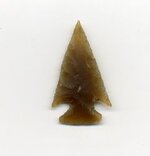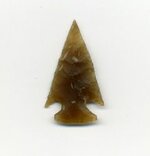Hi guys--
Don't post many of my finds but Cannonman's home-made arrowhead reminded me of one I found a couple of years back....My personal favorite. About an inch long and I believe made of Knife River flint. I don't know if you can see it in the picture, but someone told me the long smooth knap on the back of it was done on purpose to act as a channel for the blood to flow from the animal it struck. Any truth to this?
Don't post many of my finds but Cannonman's home-made arrowhead reminded me of one I found a couple of years back....My personal favorite. About an inch long and I believe made of Knife River flint. I don't know if you can see it in the picture, but someone told me the long smooth knap on the back of it was done on purpose to act as a channel for the blood to flow from the animal it struck. Any truth to this?
Amazon Forum Fav 👍
Attachments
Upvote
0







